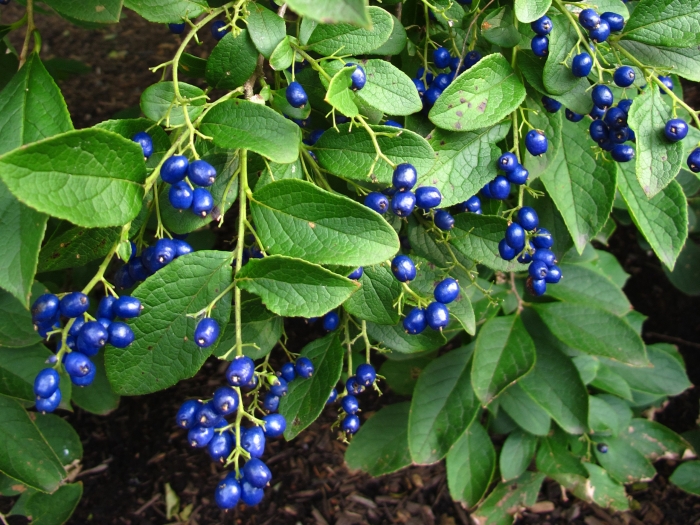Asiatic Sweetleaf
(Symplocos paniculata)
Asiatic Sweetleaf (Symplocos paniculata)
/
/

Kristine Paulus (kpaulus)
CC BY 2.0
Image By:
Kristine Paulus (kpaulus)
Recorded By:
Copyright:
CC BY 2.0
Copyright Notice:
Photo by: Kristine Paulus (kpaulus) | License Type: CC BY 2.0 | License URL: https://creativecommons.org/licenses/by/2.0 | Uploader: Nonenmac | Publisher: Wikimedia Commons | Title: Symplocos_paniculata_(9958808546)_4x3.jpg | Notes: {{Information |Description={{en|1=Leaf of aniseed myrtle, Syzygium anisatum (syn Backhousia anisata). Cultivated tree, Northern NSW, Australia.}} |Source=Own work by uploader |Author=[[User:John Moss|John Moss]] |Date=June 7, 2008 |Permission=

































Estimated Native Range
Summary
Symplocos paniculata, commonly known as Asiatic sweetleaf or sapphire-berry, is a deciduous to semi-evergreen tree native to forest edges, open woodlands, and stream banks in East Asia, including China, Japan, Korea, Taiwan, and the Himalayas. It can reach up to 12 meters (39 feet) under optimal conditions but often adopts a more shrub-like form. The tree is notable for its dense, rounded canopy and smooth, gray bark. During spring, it produces clusters of small, fragrant, white flowers that are quite showy. By late summer to early fall, these flowers give way to the distinctive blue berries that are highly attractive to birds, contributing to its common name.
Asiatic sweetleaf is valued for its ornamental features, including the striking blue fruit and fragrant flowers. It is used in gardens and landscapes as a specimen plant, for border planting, or as part of a mixed shrubbery. The tree is adaptable to a range of soil types, provided they are well-drained, and it thrives in full sun to partial shade. While it requires medium amounts of water, it is relatively low-maintenance once established. However, gardeners should be aware that it can escape cultivation and become invasive, particularly in the southeastern United States. It is recommended to monitor and manage its spread to prevent it from outcompeting native species.CC BY-SA 4.0
Asiatic sweetleaf is valued for its ornamental features, including the striking blue fruit and fragrant flowers. It is used in gardens and landscapes as a specimen plant, for border planting, or as part of a mixed shrubbery. The tree is adaptable to a range of soil types, provided they are well-drained, and it thrives in full sun to partial shade. While it requires medium amounts of water, it is relatively low-maintenance once established. However, gardeners should be aware that it can escape cultivation and become invasive, particularly in the southeastern United States. It is recommended to monitor and manage its spread to prevent it from outcompeting native species.CC BY-SA 4.0
Plant Description
- Plant Type: Shrub, Tree
- Height: 10-15 feet
- Width: 10-12 feet
- Growth Rate: Slow
- Flower Color: Cream, White
- Flowering Season: Spring, Summer
- Leaf Retention: Deciduous
Growth Requirements
- Sun: Full Sun, Part Shade
- Water: Medium
- Drainage: Slow, Medium, Fast
Common Uses
Bee Garden, Bird Garden, Butterfly Garden, Deer Resistant, Edible*Disclaimer: Easyscape's listed plant edibility is for informational use. Always verify the safety and proper identification of any plant before consumption., Fragrant
Natural Habitat
native to forest edges, open woodlands, and stream banks in East Asia, including China, Japan, Korea, Taiwan, and the Himalayas
Other Names
Common Names: Asiatic Sweetleaf, Saphirbeere
Scientific Names: , Symplocos paniculata, Symplocos coreana, Symplocos tanakana, Symplocos chinensis, Symplocos crataegoides, Palura paniculata, Palura coreana, Symplocos hunanensis, Prunus paniculata
GBIF Accepted Name: Symplocos paniculata (Thunb.) Miq.